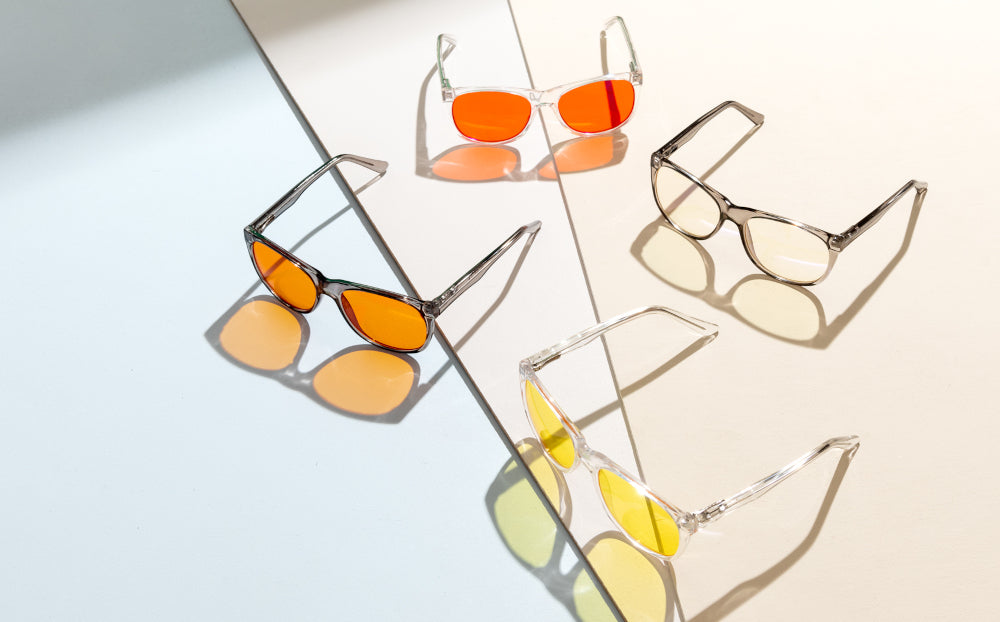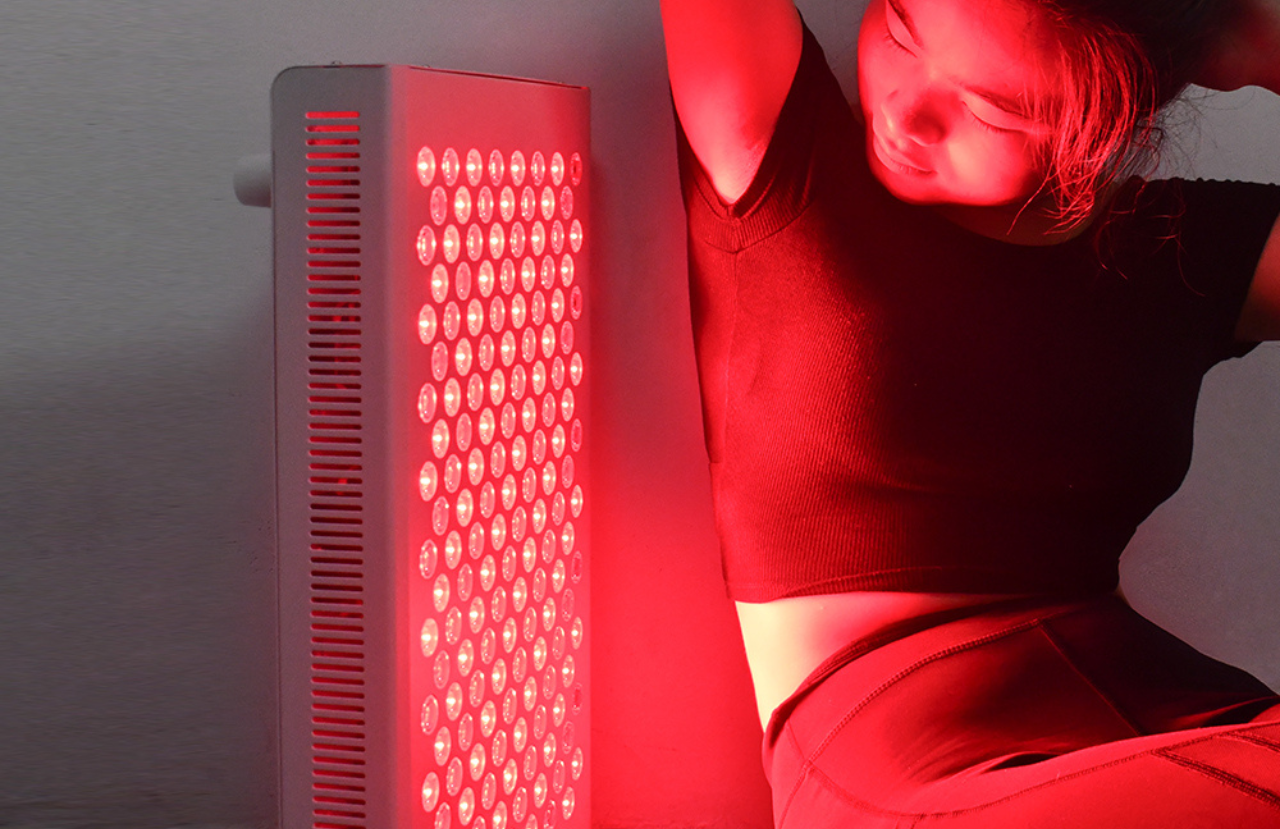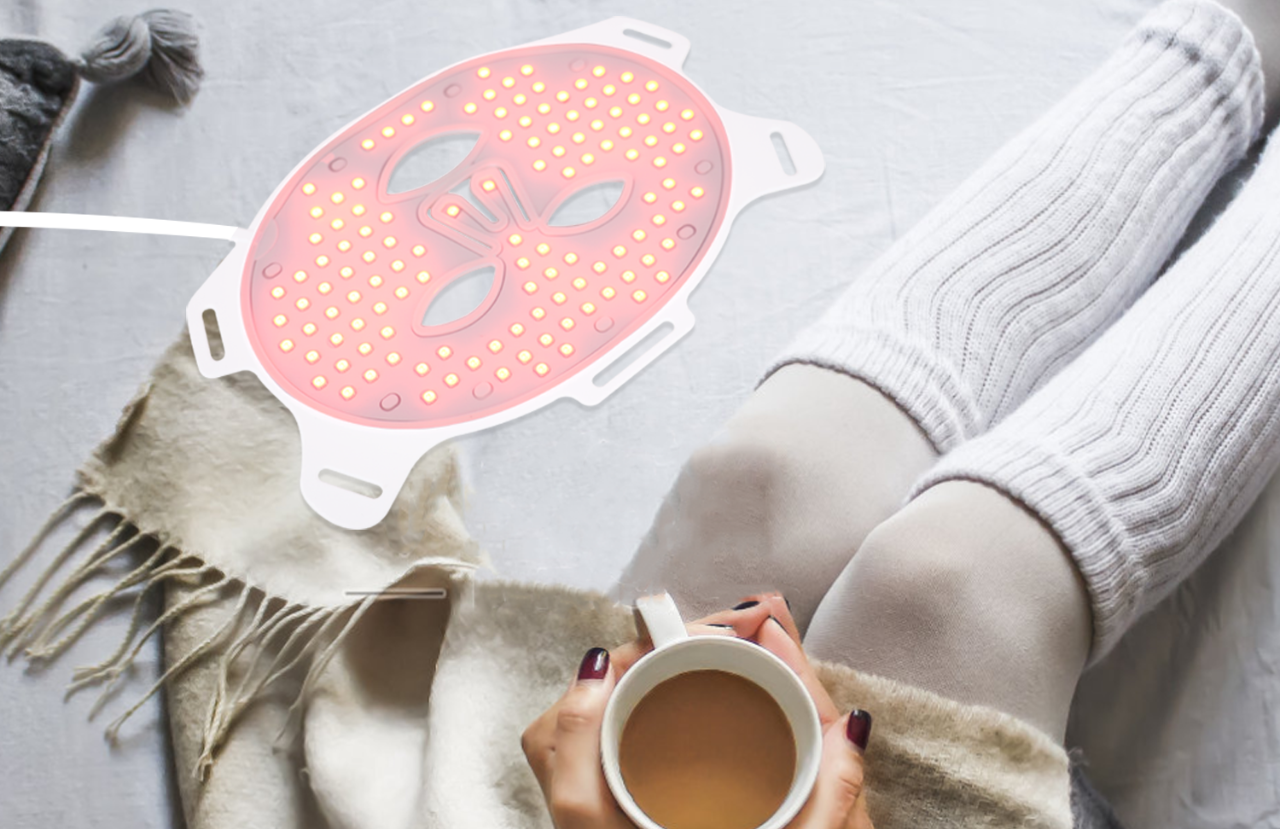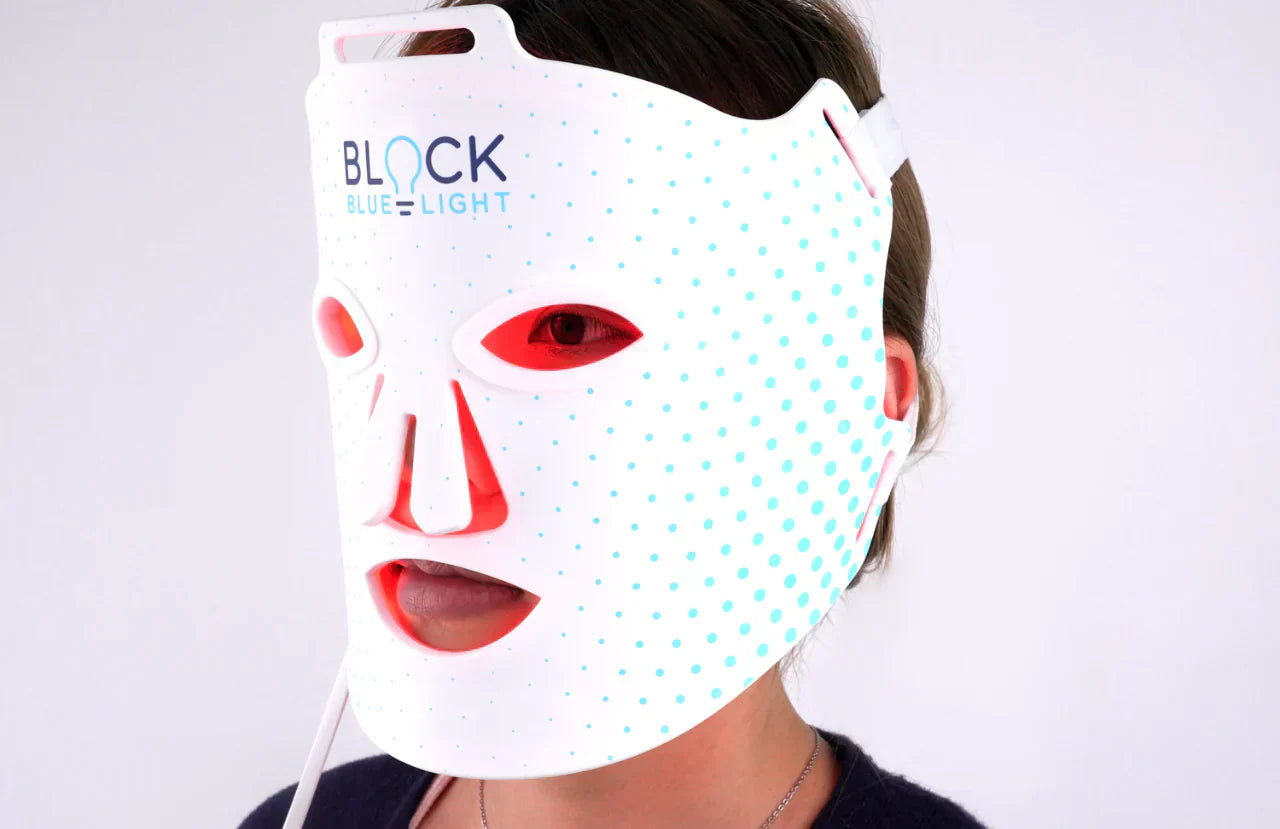Have you bought a pair of blue light glasses and you want to tell if the glasses are blue light glasses, or whether they’re fake?
You’ve come to the right place!
Here we’ve covered in detail the 5 tests to tell if glasses are blue light. One of those tests can be done before you’ve even bought the pair so you can avoid getting scammed!
First, let’s see why it’s important to tell if glasses are blue light:
There are two types of blue light glasses:
Daytime blue light glasses:
These look very similar to ordinary clear-lens glasses. You could possibly buy a normal pair of glasses and have no idea that they don’t work.

Nighttime blue light glasses:
These are usually amber or red tinted. You’d think it would be easier to tell if these glasses are blue light. Wrong! Simply having a colored lens doesn’t guarantee that the glasses are filtering the right wavelengths!

Now that you know the importance of testing your blue light glasses, let’s dive into 5 easy tests you can do to tell if glasses are blue light!
1. Use a spectrophotometer to tell if glasses are blue light
A spectrophotometer is a device that is used to measure the intensity of light in different parts of the spectrum. (Light is composed of a full spectrum of colors- the same colors as in the rainbow. Blue light glasses are designed to filter only the harmful wavelengths of light- primarily the high-energy blue light)
How does a spectrophotometer work?
A beam of light is shined through the lens of the glasses. The spectrophotometer measures the light coming out of the other side. It checks to see if the right wavelengths have been filtered out or not.
The report produced by a spectrophotometer is called a ‘transmittance spectrum report.’

*Here is an image that shows what a spectrophotometer report looks like.
It displays both the ‘colors’ or ‘wavelengths’ of blue light. It also displays the ‘percentage’ of light. For example, has blue light been filtered by 10%? By 50%? Or, by 100%?

Pros of using a spectrophotometer:
Using a spectrophotometer is the most accurate way to tell if glasses are blue light. The resulting graph (called a transmittance spectrum report) reveals to the smallest nanometer which wavelengths are being filtered, and at which intensity.
Cons of using a spectrophotometer:
Lab-grade spectrophotometers are pretty expensive. They can cost between $1000 to $10,000 and it doesn’t make sense to buy a machine which costs more than your glasses themselves!
That’s why it’s the job of the seller to display the spectrophotometer results on their website. If the seller doesn’t own a spectrophotometer, it means that don’t even know which wavelengths their glasses are targeting and you definitely should not buy from them!
How to read a transmittance spectrum report:
Read the transmittance spectrum report yourself, before you buy any pair of blue light glasses. If you’ve already bought a pair, then contact the seller and ask them to provide the report as proof.
2. Use a reflection test to tell if glasses are blue light (for daytime glasses)
This is a very rough test but can give you an idea if your glasses are doing some work or are completely fake. To do this test, tilt your glasses to an artificial light source. If you notice a blue reflection on the surface of the lens, it means that your blue light glasses are reflecting blue light. You can’t tell to what extent they filter blue light, though.

If you see a purple or green reflection, it means they only have an anti-glare filter and no blue light filtering properties.
If you see no reflection, they don’t have either blue light filtering properties or even an anti-glare coating.
3. Use a pigments test to tell if glasses are blue light (for nighttime glasses)
Hold your glasses up to a white light-emitting background, such as a white computer screen. (Try opening google docs on your mobile or laptop). Look through your lenses at the screen. Do you see a warm or yellowish tint on the screen? If yes, it means your glasses are blue light.

There are special tints in blue light glasses which filter the blue light, leaving the remaining wavelengths warmer.
If white colourss do not warm up at all, this indicates the glasses only have an anti-reflective coating which filters approximately 5 - 20% of blue light, leaving your glasses ineffective.
For daytime blue light glasses to be effective, they must filter around 50% of blue light.
4. Use the squares test to tell if glasses are blue light (for nighttime glasses)
Nighttime/evening glasses are tinted red or amber. You can test them by looking at black and blue light sources side by side, such as the squares below. If they both appear to be the same colour, (both will be appearing black or dark grey) it means your glasses work.

5. Use an RGB test to tell if glasses are blue light (for nighttime glasses)
Put on your red/amber glasses and look at the chart below.
- The ‘B’ circle should appear black for both red and amber glasses. This shows that blue light is being blocked completely.
- The ‘G’ circle should darken if you’re wearing red-tinted glasses. This shows that green light is also being filtered out.
Note: The green circle appears dark only when wearing red-tinted glasses because these filter blue and green light both. Research has shown that exposure to green light also reduces melatonin levels and disrupts sleep, just as blue light does. That’s why red light glasses (which are to be worn at night) are designed to filter green light too.
Amber glasses are designed to be worn in the evening and do not require as strong of a filter. They filter blue light only.

Tests not to use: (Blue-light pen test)
The blue light pen test usually comes with cheap blue light glasses imported from China. The instructions tell you to shine the blue light pen onto the lens of the glasses, with a white background behind. You’ll see the pen’s light is filtered and there’s no reflection behind the lens. However, this is just a marketing gimmick. These pens emit violet light, not blue. The wavelength of violet light is 380-400 nm, not the 400-500nm range of blue light.
Violet light doesn’t pose the same harmful effects as blue light does, so there’s no point in wearing a pair of glasses which filters violet rays!

Summary of how to tell if glasses are blue light:
You can use the above methods to tell if the glasses you’ve bought are blue light. However, the best way is prevention, not cure! Before you buy blue light glasses from any site, here are a few things to check:
When buying daytime blue light glasses:
Ask for a transmittance spectrum report and check the following 2 characteristics:
- Check that the 400-500 nm range is filtered by at least 50%. (400-500 nm is the wavelengths of blue light)
- Make sure that they provide protection at the peak wavelength of blue light 455nm. This is the range where most of the damage occurs. All of BlockBlueLight’s glasses have a special pigment to protect against this wavelength.
When buying nighttime blue light glasses:
Ask for a transmittance spectrum report and check the following 2 characteristics:
- Check that the 400-500nm range is 100% blocked.
- For red-tinted glasses, check that they block an additional 500-550nm range. This is the wavelength of green light. Recent studies have shown that green light disrupts melatonin levels and your sleep, just as blue light does.
When you’re buying products that affect your health, you can never be too careful. Light that enters your eyes affects your eyesight and has links with your hormones, mood, appetite and sleep patterns. That’s why it’s important that you do research and buy blue-light glasses that are backed by science.
At BlockBluelight, we understand this and we design all our products to work with your body and according to nature.
All of our blue light glasses have been tested individually by a lab-grade spectrophotometer and the results are displayed with each pair’s product description on the website.
References:
Protect your vision. Blue Light Exposed. (n.d.). http://www.bluelightexposed.com/protect-our-vision/#how-can-you-protect-your-vision-against-the-harmful-effects-of-blue-light-exposure.
Team, A. A. V. E. (2021, June 14). Blue light glasses test: How well do your blue light glasses work? All About Vision. https://www.allaboutvision.com/eyeglasses/test-blue-light-glasses/.
Team, A. A. V. E. (2021, June 25). How blue light is both bad for you AND good for you! (Huh?). All About Vision. https://www.allaboutvision.com/cvs/blue-light.htm.





